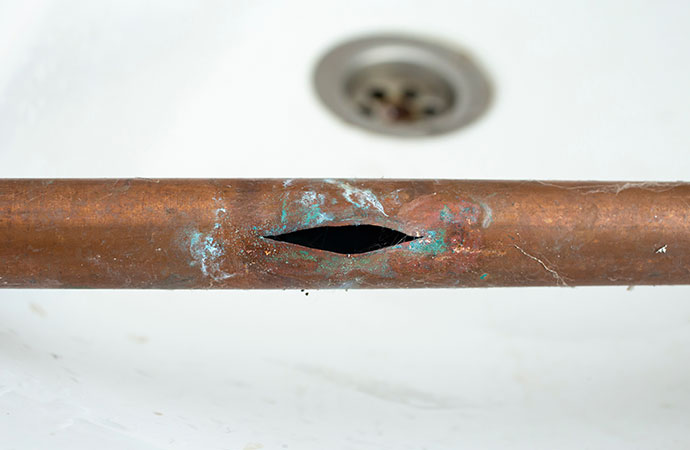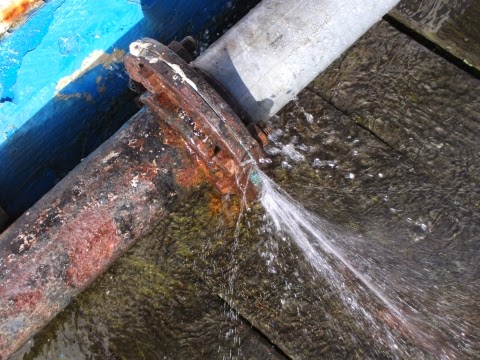From Detection to Correction: A Fast Approach to Handling Burst Pipes
From Detection to Correction: A Fast Approach to Handling Burst Pipes
Blog Article
What are your opinions concerning How to Prepare for Your Dishwasher Installation?

A burst pipeline is a significant emergency; you can only stand as you watch water you pay a lot to reunite with the planet. In worse instances, you notice a pool on your cooking area floor, which is a fantastic trip hazard, especially if you have youngsters around. If the pipeline that burst was in your wall surfaces, problem: you may require to repaint that whole section.
How can a calamity like a ruptured pipe be protected against as well as taken care of? Well, by paying attention to your professional emergency plumbing professionals and adhering to these rules.
How do I recognize when my pipelines have burst?
Rising and fall water stress
Pipes do not simply burst in a day. You may have seen that your kitchen faucet or shower does not run instantly when you transform the faucet. It might stop briefly for a few seconds and afterwards blast you with more pressure than usual.
In various other instances, the water might seem regular at first, then decrease in pressure after a couple of seconds.
Damp walls and water spots
Before a pipeline bursts, it will certainly leak, a lot of times. If this relentless leaking goes unnoticed, the leakage may graduate right into a broad tear in your pipe. One simple means to avoid this emergency is to watch out for damp wall surfaces ad water spots. These water stains will certainly lead you right to the leakage.
Puddles under pipes and also sinks
When a pipe ruptureds, the outflow develops a pool. It may show up that the puddle is expanding in size, as well as despite how many times you wipe the puddle, in a few mins, there's another one waiting to be cleaned up. Often, you might not have the ability to trace the puddle to any kind of noticeable pipes. This is an indication to call a specialist plumber.
Untraceable dripping noises
Pipeline bursts can occur in one of the most undesirable places, like within concrete, inside wall surfaces, or under sinks. When your house goes silent, you may have the ability to hear an annoyingly consistent trickling noise. Even after you have actually examined your shower head and kitchen area faucet, the trickling may continue.
Precious viewers, the dripping may be originating from a pipeline inside your wall surfaces. There isn't much you can do about that, except tell a professional plumber.
Turn off the Water
When water ices up, it increases in volume by about 9 percent. As well as it broadens with significant force: The pressure inside pipes may go from 40 pounds per square inch to 40,000 psi! No pipeline can hold that much stress, so it bursts. The break may occur where the ice types, however regularly, it happens where water stress locates a weak spot in the pipeline. That may be inches or even feet from the frozen area. Discover the water shutoff valve as well as switch off the water to stop even more damages. You could additionally require to shut off the electricity as well, depending on where the leaks happens as well as exactly how huge it is.
Polluted water
Lots of people think a ruptured pipeline is a one-way electrical outlet. Fairly the contrary. As water spurts of the hole or wound in your plumbing system, impurities locate their method.
Your water might be infected from the resource, so if you can, examine if your water container has any kind of troubles. Nonetheless, if your drinking water is supplied and purified by the city government, you should call your plumber instantly if you see or scent anything amusing in your water.
What do I do when I detect a ruptured pipeline?
Your water meter will certainly remain to run even while your water wastes. To reduce your losses, find the main controls and transform the supply off. The water pipe are an above-ground framework beside your residential property.
How to Fix & Detect a Leaking Pipe
How Do I Know if a Pipe is Leaking?
Leak detection tests can help you determine if your pipe has a leak. Even if you don’t see an apparent leak, you should still conduct leak detection tests regularly to save water and money—and prevent major damage to your home.
Water meter. It can be helpful to figure out what your usual water meter usage numbers are and then monitor them regularly. To monitor your meter, first, turn off all water faucets in your home. Check the meter and write down the numbers. In a few hours, check the meter again. If the numbers have changed, you have a leak. Water gauge. Use a water gauge to test your water pressure. Your showerhead should produce a certain amount of water pressure based on its model and design. If the pressure is lower than it is supposed to be for that specific showerhead, your home likely has a leak. Puddles. Look inside your bathroom, laundry, and kitchen sink cabinets. Puddles around the cabinets or around toilets, tubs, showers, and washing machines indicate the presence of a leaking pipe. You may also notice loose tiles, peeling or flaking paint, or mold caused by water accumulation. Napkin test. Even if you don’t see any puddles, you may still have a leak. You can test for water leaks in the bathroom, laundry, and kitchen by wiping below-sink connections with a napkin, paper towel, or piece of toilet paper. If it becomes damp, you probably have a leaking pipe under the sink. Discolored walls. Walls that are discolored—usually with brown or yellow stains—or bulging might mean that they have been impacted by water damage caused by a leaking pipe. Smell. A leaky pipe will create sitting water, and over time, that water may develop a musty smell. If your home smells musty, but you can’t locate the source, it may be due to a leak. Steps for Fixing a Leaking Pipe
A leaky drain can be remedied by tightening the pipe base, replacing the drain seal, caulking the rim, and tightening the pipe nut. Similarly, a leaking toilet pipe can be treated by tightening the packing nut. You may also need to replace the valve. A leaky faucet may just need tightening or replacement of the washers. If that doesn’t work, consider replacing your faucet. If your pipe has a hole in it, you may want to use a pipe leak sealer or pipe leak tape. This quick fix for water pipe leaks can also temporarily fix a copper pipe leak. https://www.ahs.com/home-matters/quick-tips/how-to-tell-if-pipes-are-leaking/

As a passionate reader about How to Install and Connect a New Dishwasher, I think sharing that excerpt was worthwhile. Remember to take a moment to share this blog posting if you enjoyed reading it. Thank you for taking the time to read it.
Schedule An Appointment
Report this page